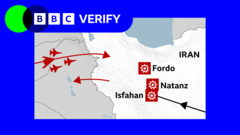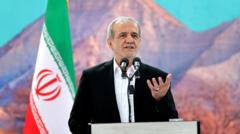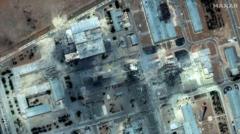After a covert mission involving decoy tactics and sophisticated bombers, the US claims a successful strike against Iran's nuclear capabilities. However, the full impact of Operation Midnight Hammer remains uncertain.
Operation Midnight Hammer: The US Strikes Iran's Nuclear Facilities

Operation Midnight Hammer: The US Strikes Iran's Nuclear Facilities
A detailed breakdown of the US military's recent operation against Iran's nuclear sites, showcasing advanced tactics and weaponry used in the stealth mission.
In a high-stakes military operation dubbed "Operation Midnight Hammer," the United States carried out a covert assault on Iran's nuclear facilities using advanced military tactics and weaponry. According to General Dan Caine, Chairman of the Joint Chiefs of Staff, the mission involved a continuous flight lasting over 18 hours, multiple mid-air refuelings, and several decoy flights to throw off any potential adversaries.
The operation commenced just after midnight when US Secretary of Defense Pete Hegseth, accompanied by President Donald Trump and top Pentagon officials, monitored the launch of a fleet of B-2 stealth bombers from Whiteman Air Force Base, Missouri. These aircraft, equipped with powerful "bunker buster" bombs, were en route to strike key fortified nuclear sites in Iran, particularly the underground Fordo facility known for its nuclear enrichment activities.
Initially, the region's attention was diverted towards Guam, where secondary military movements were reported. This strategic misdirection, described by Gen Caine, allowed the bombers to approach Iran undetected. The B-2 bombers remained stealthy, evading radar and flight tracking technologies.
Once the task force reached the Middle East, they were joined by support planes that ensured the bombers' safety from potential threats, despite the lack of an Iranian air defence response during the maneuver. Following intensive planning, the bombers executed the strikes, deploying a total of 14 Massive Ordnance Penetrator bombs on the nuclear sites, including those at Fordo and Natanz.
Alongside the strikes from the aerial units, US submarines fired over two dozen Tomahawk missiles targeting the Isfahan nuclear site, creating a coordinated multi-site attack. The bombings, executed rapidly within a 25-minute window, were touted by US officials as a decisive strike capable of significantly degrading Iran's nuclear capabilities.
Despite the apparent tactical success claimed by the US administration, the lasting impacts of the operation are yet to be fully comprehended. Iran has acknowledged the attacks, albeit downplaying the extent of the damage incurred. Experts emphasize that while the mission demonstrated unprecedented military prowess, future implications for Iran's nuclear ambitions remain uncertain.





















